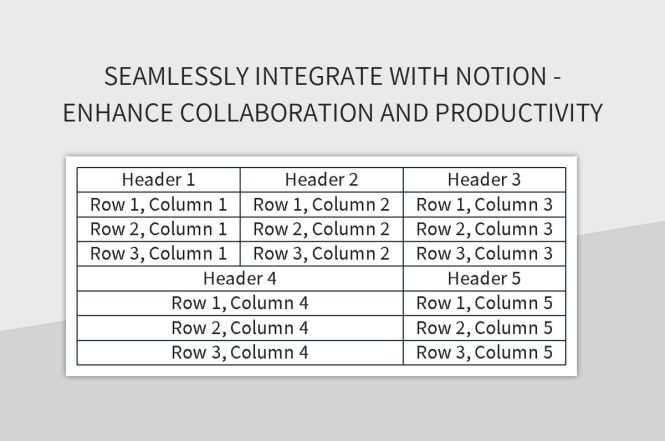

Integrate Devices Seamlessly is crucial for modern living and businesses. Imagine a world where your devices communicate effortlessly, collaborating seamlessly to enhance your daily life or improve your business workflows. Device integration is the key to unlocking the true potential of technology, allowing diverse devices to cooperate seamlessly. The challenge, however, is that different systems don’t always speak the same language, which can lead to frustrations and compatibility issues. This article provides a comprehensive overview of best practices and strategies for achieving seamless device integration, covering everything from choosing the right tools to implementing robust protocols.
Understanding the Importance of Seamless Device Integration
The Benefits of Connected Devices
In today’s interconnected world, the ability to integrate devices seamlessly is more critical than ever. Whether in a home, office, or factory environment, seamless connectivity creates efficiency and streamlines processes. Imagine a smart home where lights dim automatically as you enter a room or appliances automatically adjust based on your schedule. These scenarios are only possible through seamless device integration. Such integrations also enhance productivity in industrial settings by coordinating machinery and equipment. This improved coordination improves workplace efficiency and reduces downtime. Seamless integration facilitates the collection and analysis of data from various sources, unlocking new insights for informed decision-making.
The Challenges of Device Integration
However, achieving this level of integration is not without its challenges. Often, devices from different manufacturers utilize different protocols and communication standards, making it difficult to connect them. Security concerns also need careful consideration, especially when handling sensitive data. Additionally, the complexity of integrating a large number of devices can become overwhelming.
Choosing the Right Integration Tools
Selecting Compatible Hardware and Software
One of the first steps in achieving seamless device integration is selecting hardware and software that are compatible. Investigate the specifications of your devices thoroughly, including operating systems, communication protocols, and required hardware. Choosing devices that use a unified platform is paramount for simplicity. Look for devices that comply with industry standards, such as Wi-Fi or Bluetooth, to simplify integration. Investigate open-source or cross-platform compatible technologies to maximize flexibility. Consider the cloud-based options for scalability and management.
Implementing Robust Communication Protocols
Once you have chosen compatible hardware and software, the next step is to implement robust communication protocols. This involves defining the method through which devices will communicate and exchange data. Choose protocols that are reliable, secure, and scalable to accommodate the specific needs of your integration project. There are numerous available protocols such as MQTT, AMQP, CoAP, and DDS, each with its unique benefits and drawbacks.
Evaluating Security Measures
Protecting data transmitted between devices is essential. Ensure all your chosen technologies prioritize security by using encrypted communication channels and access controls. Regular security audits are crucial to address vulnerabilities.
Implementing a Unified Platform
Creating a Centralized Hub
To achieve true seamlessness, a centralized hub or platform that coordinates communication among all devices is required. This hub can be a dedicated piece of software, a cloud-based service, or even a custom-built solution. Identify the optimal centralized platform for seamless connectivity.
Leveraging Cloud-Based Solutions
Cloud Platforms for Scalability and Management
Cloud-based platforms are an excellent choice for seamlessly integrating devices on a large scale. Their scalability ensures that the system can handle increasing numbers of devices without compromising performance or stability. Cloud platforms also facilitate remote management of devices from anywhere with an internet connection, eliminating the need for constant on-site support. They also allow for real-time monitoring and analysis of device performance, helping you identify potential issues promptly.
Creating an Inclusive Ecosystem
Fostering Compatibility Across Platforms
Integrating devices seamlessly requires creating an inclusive environment where devices from different vendors and platforms can coexist and communicate effectively. Prioritize devices from the same vendor to ease the integration process.
Case Studies and Real-World Examples
Future Trends and Technologies
Best Practices for Long-Term Integration
Conclusion for Integrate Devices Seamlessly
Frequently Asked Questions
Q: What are the key considerations for integrating devices from different manufacturers?
A: Key considerations include verifying compatibility between devices, understanding the communication protocols used by each device, ensuring data security and integrity throughout the process, and developing a centralized platform for communication. It is also vital to establish robust security protocols for both individual devices and the integration system as a whole to protect sensitive information.
Q: How can I choose the right communication protocols for device integration?
A: Selecting the right protocols hinges on factors such as data volume, speed requirements, reliability, security needs, and scalability. Consider the specific needs of your application and evaluate the performance of various communication protocols. A thorough understanding of these factors will lead to an informed decision.
Q: How to ensure the security of the integrated device system?
A: Prioritizing security throughout the device integration process is paramount. Utilize strong passwords, multi-factor authentication, and encryption techniques. Regular security audits and maintenance are vital to identifying and addressing vulnerabilities and potential threats proactively. Following security best practices is vital for a secure and reliable integration.
In conclusion, seamlessly integrating devices hinges on a strategic approach that balances user experience with technological advancements. By prioritizing compatibility, leveraging cloud-based solutions, and fostering an inclusive ecosystem, businesses and consumers can unlock the full potential of connected devices. Ready to elevate your device integration game? Visit our website to learn more about tailored solutions for your needs.